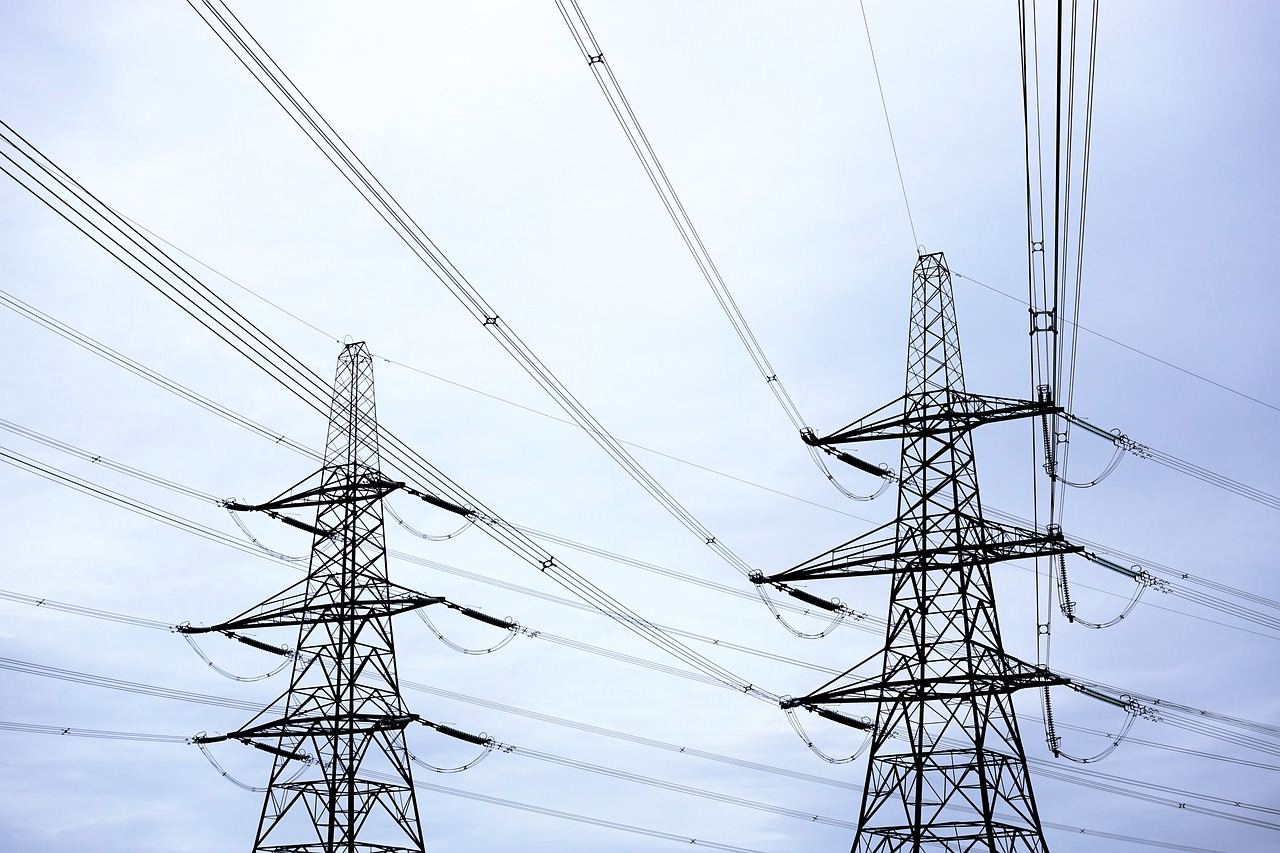A big lesson from this year has been the importance of energy – specifically, never again taking for granted either its consistency of supply or its price.
Demand for oil and gas was already growing before Russia invaded Ukraine in February 2022, as economies around the world emerged from lockdown. The war in Ukraine exacerbated the trend, demand outstripped supply, and rising gas prices fed through to increased electricity prices.
With energy costs now a drag on world economies, the UK’s commitment to achieving net zero greenhouse gas emissions by 2050 is questioned by many, but the case for green energy is if anything stronger, and the argument is more about how long we must rely on fossil fuels before switching completely to more sustainable alternatives such as wind, solar and nuclear.
The Galbraith team has been as active as ever, advising through its UK offices on windfarm opportunities, renewable options to power or heat homes, negotiating new power lines and other issues.
Here our experts look back on the big stories of 2023 – reported and commented on in the Insights section of our website, our Energy Matters magazine and on our social media channels, and we identify some of the key energy and utility themes we expect to influence the property market in 2024.
The electricity grid
This year underscored how lack of investment in the grid is constraining renewable energy projects and the need for some 150,000 to 450,000 miles of new cable and pylons. In May, Scottish and Southern Electricity Networks (SSEN) launched consultations on a £20bn super pylon route from Tealing to Kintore down some of the most productive arable land in Scotland.
The 55-metre towers will significantly impact the visual amenity and value of houses nearby and, some say, create a major risk to Scotland’s seed potato industry. Following initial consultation SSEN made changes to the route; further consultation will follow next year.
Other major proposed routes include a 170km line in the East Highlands through Easter Ross to Beauly, the Western Isles Interconnector (high-voltage, direct current), Shetland Interconnector (HVDC), Beauly to Peterhead 400kV overhead line and Tealing to Kintore (400kV OHL). Two undersea cables will provide further vital power links – the Eastern Green Link 2 from Peterhead to Drax and the Eastern Green Link 3 from Peterhead to Lincolnshire.
Ministers are seeking to dilute powers to object to such lines but the derisory suggestion of £1,000 off electricity bills – proposed by Westminster but not extending to Scotland – is unlikely to address the devaluation of property or the opposition to such schemes.
Network modernisation
A big infrastructure challenge must be met to maintain supply while serving the needs of a 21st century economy. That is, transforming the grid from a centralised system traditionally reliant on large, fossil fuel-burning generators, into a network powered by diverse renewable-energy technologies at sites spread throughout Britain, many located in Scotland.
Symptomatic of this challenge is curtailment.
Matching supply to demand is simple in fossil fuel-dominated energy systems, but in the transition to renewables, power production from wind farms and solar arrays is driven by fluctuating weather patterns, not when operators decide to burn fossil fuels.
When renewables generate excess electricity, the challenge is how to harness extra energy either to serve places where demand is high, or store it for still and sunless days.
Currently network infrastructure to achieve this is lacking, so high levels of renewable generation put pressure on the grid, sometimes risking overload. At such times, generators are paid to stop producing electricity, driving up bills for consumers and wasting renewable energy.
The electricity system operator ESO is boosting grid capacity to address this, while developers and energy suppliers are investing heavily in battery energy storage systems (BESS) to fix the intermittency problem – storing excess electricity from times of high wind and sun to serve high demand occurring at other times.
However, current battery storage systems have yet to achieve the efficiency to solve the problem, and a worldwide race is on to identify and harness the technologies required to improve performance.
As the body charged with keeping the grid stable to deliver safe and reliable electricity while also preparing to operate at zero-carbon by 2025, ESO is undertaking three so-called Pathfinder projects to accommodate the carrying of increased energy from renewable and low-carbon sources.
ENO’s Network Option Assessment (NOA) recommends which network reinforcement projects should receive investment – and when. The first offers solutions to regional high voltage issues; the second looks at immediate national stability issues and short circuit level needs in Scotland, while a third seeks to resolve network constraint issues and lower balancing costs.
In February plans were unveiled to modernise the electricity network with the introduction of ESO‘s plan to improve connections. As part of this, the transmission entry capacity (TEC) amnesty received over 8GW of interest, alleviating pressure within the project pipeline by allowing stalled projects more easily to withdraw from the TEC register.
For other energy storage technologies that are dual purpose, i.e. generation and storage, the ESO changed how it calculates impact on the system, with the aim of enabling projects to connect to the grid more quickly.
To round off a dynamic year of grid reform, on 5 December the ESO published its final recommendations for long-term grid connections, mandating the “first ready, first connected” approach.
The ESO is looking to implement these changes by the start of January 2025, so we anticipate further transitioning towards the “shovel-ready” queuing approach in 2024. With the ESO Future Energy Scenarios modelling showing Great Britain needs between 123-147 GW of low-carbon transmission generation by 2030 to be on a net zero compliant pathway, the need for projects to get from queue to build is paramount.
Renewables
Throughout 2023, as a firm we have been involved in many renewable projects including battery energy storage systems, solar PV projects, onshore and offshore wind developments. We are hopeful that the National Planning Framework 4 (NPF4) will encourage, promote and facilitate all forms of renewable energy.
The biggest constraint, aside from planning, is system capacity so we predict that with the grid connection reform in 2024 and the NPF4, we will see more momentum in the progression of projects and more renewable sites coming online than over the past few years.
The Scottish Government has committed to deploy at least 4GW but up to 6GW of solar power by 2030. Although the full 2023 renewable statistics have not yet been released we note that renewable power generation in the UK reached a record high output in the third quarter of 2023, with a total of 26.2 terawatt-hours produced, and we are looking forward to diving deep into the full figures.
Telecoms
The Shared Rural Network, developed by the UK’s four mobile network operators with significant Government subsidy, is now in full flow, requiring 95% combined coverage across the whole of the UK by the end of 2025. While the revised valuation basis granted to operators was supposed to fund such programmes, this has failed and Government has subsidised operators to the tune of £1bn in this project.
Proposals to site masts in remote and iconic areas such as the Lairig Ghru in the Cairngorm National Park and on the Knoydart peninsula are raising concerns about the industrialisation of Scotland’s wilderness areas.
If operators fail to deliver on their commitments, aimed at delivering digital access across the country, they can be fined up to 10% of their turnover and are therefore taking a very aggressive approach. Over 2023 there has been no let-up in the number of cases going before the Lands Tribunal as phone companies try to force agreements on landowners that are heavily weighted in operators’ favour.
Whereas under its predecessor, operators had only to resort to the courts in seven reported actions, there have been over 800 cases before the Tribunal in England and Wales, 90 in Scotland and 50 in Northern Ireland. With operators intent on driving through standard agreements regardless of the concerns of landowners, there is likely to be no let-up in this.
As confirmed by recent cases, the powers of operators under the 2019 legislation are particularly onerous on landowners of rooftop sites and where development is likely.
Land use
Only 8% of Scotland is arable land and there is increasing pressure to use this for purposes other than food production. Urban expansion and infrastructure such as roads have always led to the permanent loss of such land.
Increasingly forestry, greening and rewilding projects will exert further pressure. So too will renewable energy projects such as solar as the Scottish Government has relaxed its planning policy toward the use of prime agricultural land for such projects.
It appears the use of land to grow biofuels and fuel for anaerobic digesters will continue to contribute to the decline of arable land used for food production as such uses result in greater returns. This trend is likely to continue as projects such as growing sugar beet for bio plastics replace fossil fuel in industry.
Offshore wind
The UK, and Scotland in particular, is geographically among the world’s best locations for producing low-carbon energy from offshore wind.
Development of this huge resource has moved fast, helped by the ‘contracts for difference’ (CfD) pricing system adopted by the UK Government. The auction process provides developers with some revenue certainty, so they can plan and commit to new projects.
Ceiling prices under the system have fallen over the years, reflecting lower production costs as technology and efficiency improved and output grew, stabilising low-carbon electricity prices for customers. Offshore wind farms secured a guaranteed price of £37.50 per MWh by last year compared to £155 per MWh in the first contract auction in 2015.
However, crisis hit the industry in 2023. First the cost of building and installing turbines increased as the price of materials rose sharply owing to the energy crisis, with a number of projects shelved as a result. Then, borrowing costs to finance multibillion-pound projects leapt in line with global interest rates.
No bids came in at all in this year’s offshore wind auction – the £44/MWh strike price was deemed too low to make projects viable.
In response, the UK Government acted in November to restore confidence among developers, manufacturers, investors and utilities by raising the maximum price offshore wind and other renewables projects can receive in the next renewables auction round.
The maximum strike price was raised by 66% to £73/MWh, and by 52% for floating offshore wind projects, from £116/MWh to £176/MWh in advance of the next CfD round, scheduled to open for bids in March 2024.
“This will help ensure projects are sustainably priced and economically viable,” said the Government. “Offshore wind will also be given a separate funding pot in recognition of the high number of projects ready to participate. This will ensure healthy competition among a strong pipeline of projects, helping the UK deliver on its ambition of up to 50GW of offshore wind by 2030, including up to 5GW of floating offshore wind.”
Offshore wind is a huge resource for the UK in moving from reliance on fossil fuels to a low-carbon economy and CfDs have played a major part in reducing the cost of renewables. The industry has the potential to create tens of thousands of new jobs by 2030, helping grow the UK economy.
We believe the new pricing regimes will go some way to getting back on track the UK’s target of delivering up to 50GW of offshore wind by 2030, including up to 5GW of floating offshore wind.






